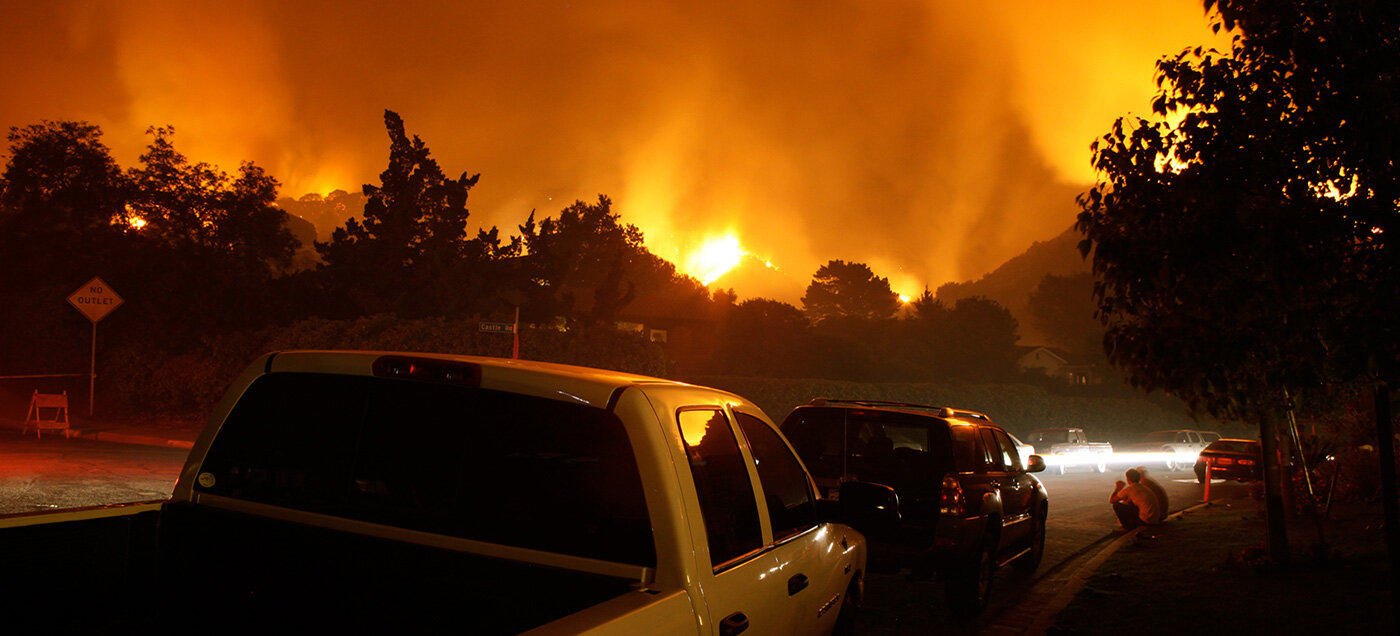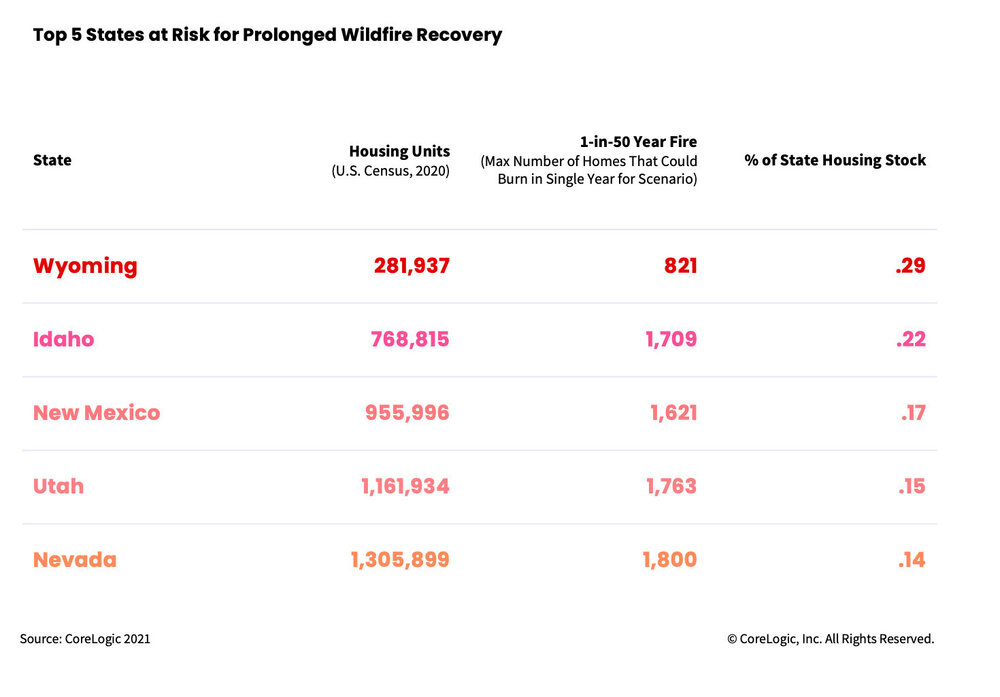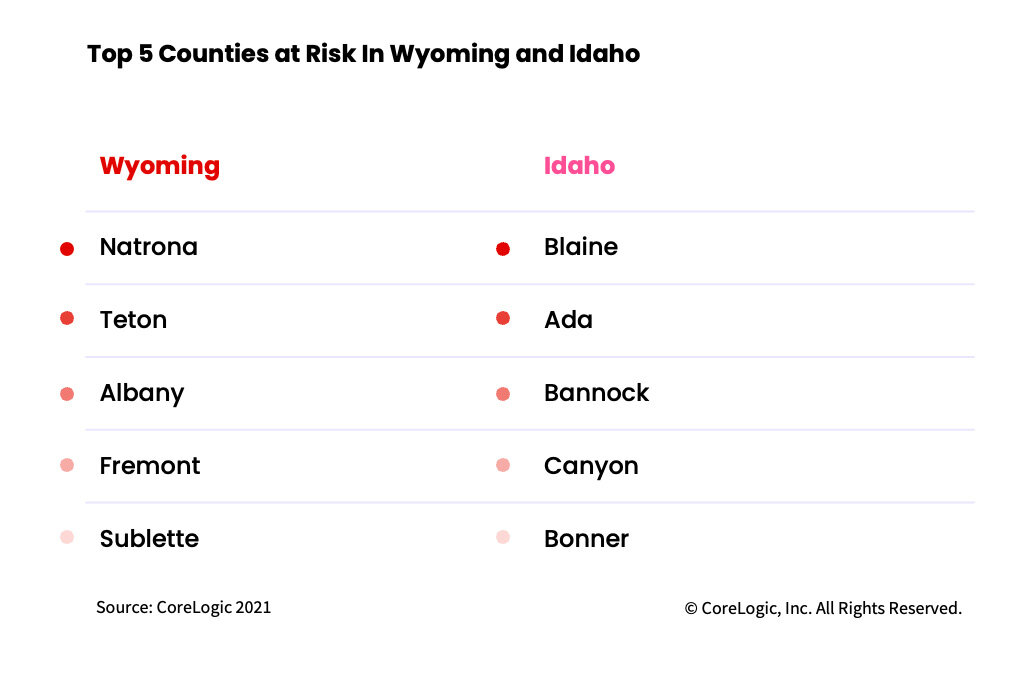Residential Real Estate News

Wyoming, Idaho Homes at Highest Risk of Wildfire Economic Recovery
Residential News » Cheyenne Edition | By WPJ Staff | October 1, 2021 8:12 AM ET
Based on CoreLogic's annual Wildfire Report for 2021, while California traditionally tops the list each year for wildfire risk simply because it's the most populous state, Wyoming and Idaho are the top states most at risk for a prolonged wildfire recovery.
Understanding Risk and Resilience
If a fire destroys 800 homes in California, the road to recovery and lasting impact is not synonymous with 800 homes burning in Wyoming, when considering the size of each state's housing stock. In states like Wyoming and Idaho, the number of homes at risk is a larger fraction of the total number of homes in the state. If a larger portion of the population is displaced at a single time, recovery times may be elongated, fewer local workers might be available -- and likely distracted rebuilding their own lives -- and fewer hotels and housing options may be available to outside workers due to local populace demand.
"There's no denying a state like California is at severe risk for wildfire destruction every year, as seen in the ongoing Dixie Fire," said Tom Larsen, principal, insurance solutions at CoreLogic. "But it's important to acknowledge that not all communities and their catastrophic events are the same, and the road to recovery can look drastically different. Resilience is often measured as how fast you can recover from a catastrophe -- and the deeper the wound, the longer it takes to heal."
Within these states, CoreLogic identified the five counties at highest risk. These counties, if impacted by wildfire, would likely have a longer and more difficult road to recovery than counties in more populous states.
Anticipating Climate Change Complications
The changing climate creates abnormal weather activity, like unusually high rainfall during seasons of vegetative growth, that then creates an overgrowth of plants known as ground fuels.
The environment is changing too rapidly to rely solely on wildfire loss history to plan for future wildfire mitigation and response. Probabilistic risk models, which can evaluate simulations of weather variation in today's environment, can produce planning scenarios relevant to communities now.
Sign Up Free | The WPJ Weekly Newsletter
Relevant real estate news.
Actionable market intelligence.
Right to your inbox every week.
Real Estate Listings Showcase
Related News Stories
Residential Real Estate Headlines
- Las Vegas Area Home Prices Uptick 4.3 Percent Annually in March
- Single-Family Rent Growth in U.S. Trends Upward in 2025
- U.S. Mortgage Rates Tick Down Post Trump Tariffs Commencement
- President Trump's 'Liberation Day' Tariffs Potential Impact on the U.S. Housing and Mortgage Markets
- Baby Boomers Biggest Cohort of U.S. Home Buyers in 2025 as Millennials Decline
- U.S. Monthly Housing Payments Hit Record High in 2025
- U.S. Pending Home Sales Uptick in February
- Global Prime Residential Rent Slowdown Continued in Late 2024
- Ireland Home Price Inflation Hits 8 Year High in Early 2025
- Existing Home Sales in America Uptick in February
- Great Miami Area Residential Sales Decline 15 Percent Annually in February
- Mortgage Rates Uptick in Mid-March, Ending 9-Week Decline in U.S.
- World Property Ventures Builds the Future of Real Estate with New Funding Round
- U.S. Builder Sentiment Declines Amid Economic Uncertainty and Rising Costs
- Black Homeownership Rates in U.S. Enjoy Largest Annual Increase of All Racial Groups
- Wealthy Renters Are Taking Over More of the U.S. Rental Market
- If U.S. Congress Does Not Extend NFIP Soon, Thousands of Daily Home Closings Impacted
- U.S. Mortgage Applications Spike 11 Percent in Early March
- Greater Palm Beach Area Residential Sales Rise in Early 2025
- New Apartments in U.S. Are Leasing at Slowest Pace on Record
- U.S. Mortgage Rates Drop to 4 Month Low in March
- Overall U.S. Mortgage Delinquency Rates Dip in December
- New Tariffs on Canada, Mexico to Impact U.S. Homebuilder Input Costs
- Monaco's Property Market: A Tale of Two Cities
- U.S. Home Purchase Cancellations Surge, 1 in 7 Sales Getting Canceled
- U.S. Pending Home Sales Hit Historic Low in Early 2025
- Greater Miami Area Residential Sales Dip in January
- Governor DeSantis Supports Ending Property Taxes in Florida
- WPV Aims to Become the Berkshire Hathaway of Real Estate Tech
- U.S. Home Sales Slump Continues in January
- Average Americans Spend 38 Percent of Monthly Income on Mortgage Payments
- Switzerland's Safe-Haven Appeal Grows with World's Wealthy Homebuyers
- U.S. Builder Confidence Rapidly Declines in February
- Las Vegas Home Sales Rise 6.7 Percent Annually in January, Condo Sales Dip
- Homebuyer Demand in America Drops to 5-Year Low in Early 2025
- Ownership More Affordable Than Renting in Most U.S. Markets
- The World's First Global Listings Service Launches, Called a GLS
- Home Prices Continue to Rise in 89 Percent of U.S. Metros in Late 2024
- Global Luxury Residential Prices Showed Gradual Improvement in Late 2024
- U.S. Construction Hiring Rate Drops to Lowest Levels in 5 Years







